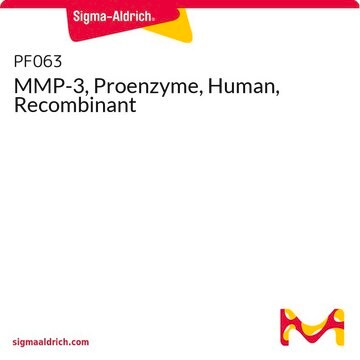If this product has an expiration or retest date, it will be shown on the Certificate of Analysis (COA, CofA). If there is no retest or expiration date listed on the product's COA, we do not have suitable stability data to determine a shelf life. For these products, the only date on the COA will be the release date; a retest, expiration, or use-by-date will not be displayed.
For all products, we recommend handling per defined conditions as printed in our product literature and website product descriptions. We recommend that products should be routinely inspected by customers to ensure they perform as expected.
For products without retest or expiration dates, our standard warranty of 1 year from the date of shipment is applicable.
For more information, please refer to the Product Dating Information document: https://www.sigmaaldrich.com/deepweb/assets/sigmaaldrich/marketing/global/documents/449/386/product-dating-information-mk.pdf
R3501
Rifampicine
≥95% (HPLC), powder or crystals
Synonyme(s) :
3-(4-méthylpipérazinyliminométhyl)rifamycine SV, Rifampine, Rifamycine AMP
Sélectionner une taille de conditionnement
Sélectionner une taille de conditionnement
About This Item
Produits recommandés
Niveau de qualité
Essai
≥95% (HPLC)
Forme
powder or crystals
Couleur
Reddish-brown
pKa
1.7 (4-hydroxyl group)
7.9 (4-piperazine nitrogen)
pl
4.84
Spectre d'activité de l'antibiotique
Gram-negative bacteria
Gram-positive bacteria
mycobacteria
viruses
Mode d’action
protein synthesis | interferes
Température de stockage
−20°C
Chaîne SMILES
CO[C@H]1\C=C\O[C@@]2(C)Oc3c(C)c(O)c4c(O)c(NC(=O)C(C)=C\C=C\[C@H](C)[C@H](O)[C@@H](C)[C@@H](O)[C@@H](C)[C@H](OC(C)=O)[C@@H]1C)c(\C=N\N5CCN(C)CC5)c(O)c4c3C2=O
InChI
1S/C43H58N4O12/c1-21-12-11-13-22(2)42(55)45-33-28(20-44-47-17-15-46(9)16-18-47)37(52)30-31(38(33)53)36(51)26(6)40-32(30)41(54)43(8,59-40)57-19-14-29(56-10)23(3)39(58-27(7)48)25(5)35(50)24(4)34(21)49/h11-14,19-21,23-25,29,34-35,39,49-53H,15-18H2,1-10H3,(H,45,55)/b12-11+,19-14+,22-13-,44-20+/t21-,23+,24+,25+,29-,34-,35+,39+,43-/m0/s1
Clé InChI
JQXXHWHPUNPDRT-WLSIYKJHSA-N
Vous recherchez des produits similaires ? Visite Guide de comparaison des produits
Description générale
Application
Actions biochimiques/physiologiques
Autres remarques
Mention d'avertissement
Warning
Mentions de danger
Conseils de prudence
Classification des risques
Acute Tox. 4 Oral
Code de la classe de stockage
11 - Combustible Solids
Classe de danger pour l'eau (WGK)
WGK 1
Point d'éclair (°F)
Not applicable
Point d'éclair (°C)
Not applicable
Équipement de protection individuelle
dust mask type N95 (US), Eyeshields, Gloves
Faites votre choix parmi les versions les plus récentes :
Certificats d'analyse (COA)
Vous ne trouvez pas la bonne version ?
Si vous avez besoin d'une version particulière, vous pouvez rechercher un certificat spécifique par le numéro de lot.
Déjà en possession de ce produit ?
Retrouvez la documentation relative aux produits que vous avez récemment achetés dans la Bibliothèque de documents.
Les clients ont également consulté
Articles
Discover critical characteristics to consider when working with enzyme inhibitors, such as cell permeability, the prozone effect, and Lipinski’s rule of 5.
-
How can I determine the shelf life / expiration / retest date of this product?
1 answer-
Helpful?
-
-
How is shipping temperature determined? And how is it related to the product storage temperature?
1 answer-
Products may be shipped at a different temperature than the recommended long-term storage temperature. If the product quality is sensitive to short-term exposure to conditions other than the recommended long-term storage, it will be shipped on wet or dry-ice. If the product quality is NOT affected by short-term exposure to conditions other than the recommended long-term storage, it will be shipped at ambient temperature. As shipping routes are configured for minimum transit times, shipping at ambient temperature helps control shipping costs for our customers. For more information, please refer to the Storage and Transport Conditions document: https://www.sigmaaldrich.com/deepweb/assets/sigmaaldrich/marketing/global/documents/316/622/storage-transport-conditions-mk.pdf
Helpful?
-
-
What solvent should be used to reconstitute item R3501, Rifampicin?
1 answer-
Rifampicin is soluble in CHCl3. Additionally, it is soluble in water at pH 4.3 (1.3 mg/ml), methanol (25 mg/ml), DMSO (25 mg/ml), dimethyl sulfoxide, tetrahydrofuran, and water at pH 7.3 (2.5 mg/ml at 25°C).
Helpful?
-
-
What is the difference between the various Rifampicin products available from Sigma-Aldrich?
1 answer-
Sigma-Aldrich offers several Rifampicin products, each tested and best suited for specific applications. The products range from a general use research grade to sterile powder, to plant culture tested. See individual products for specific details.
Helpful?
-
-
The label advises that I should store Product R3501, Rifampicin, frozen. But when it arrived there was no ice in the package. Why is that?
1 answer-
This product in its powder form is stable for short periods of time (i.e., the shipping process), at ambient temperature. For long term storage it is best to store it at -20°C.
Helpful?
-
-
How is the potency determined for Product R3501, Rifampicin?
1 answer-
The potency is determined from a microbiological assay (USP XXII) for antibiotics, a 2-level assay. The test organism is Bacillus subtilis ATCC 6633. The minimum dose is 4.0 μg/ml and the maximum dose is 8.0 μg/ml.
Helpful?
-
-
What is the Department of Transportation shipping information for this product?
1 answer-
Transportation information can be found in Section 14 of the product's (M)SDS.To access the shipping information for this material, use the link on the product detail page for the product.
Helpful?
-
Active Filters
Notre équipe de scientifiques dispose d'une expérience dans tous les secteurs de la recherche, notamment en sciences de la vie, science des matériaux, synthèse chimique, chromatographie, analyse et dans de nombreux autres domaines..
Contacter notre Service technique












